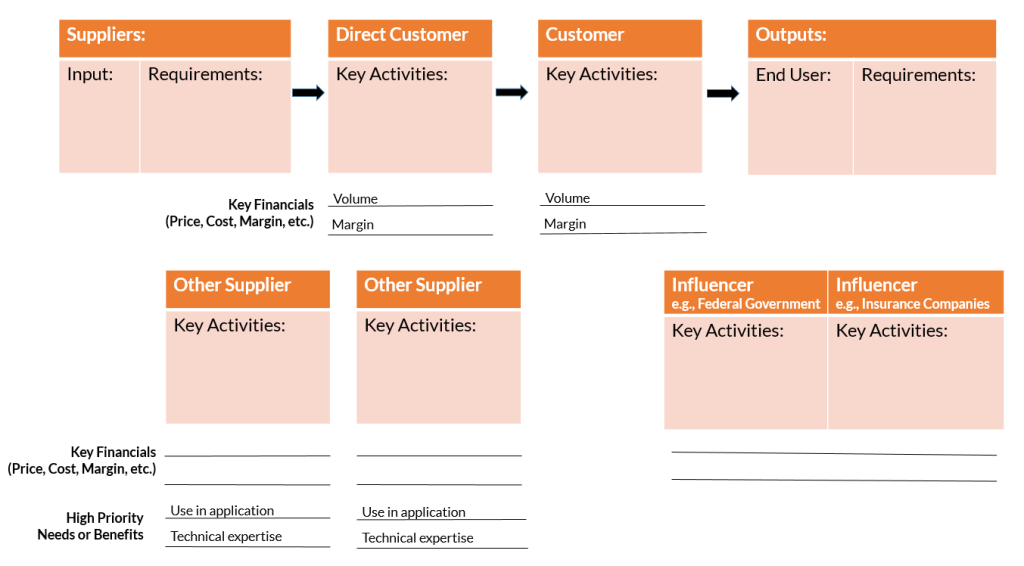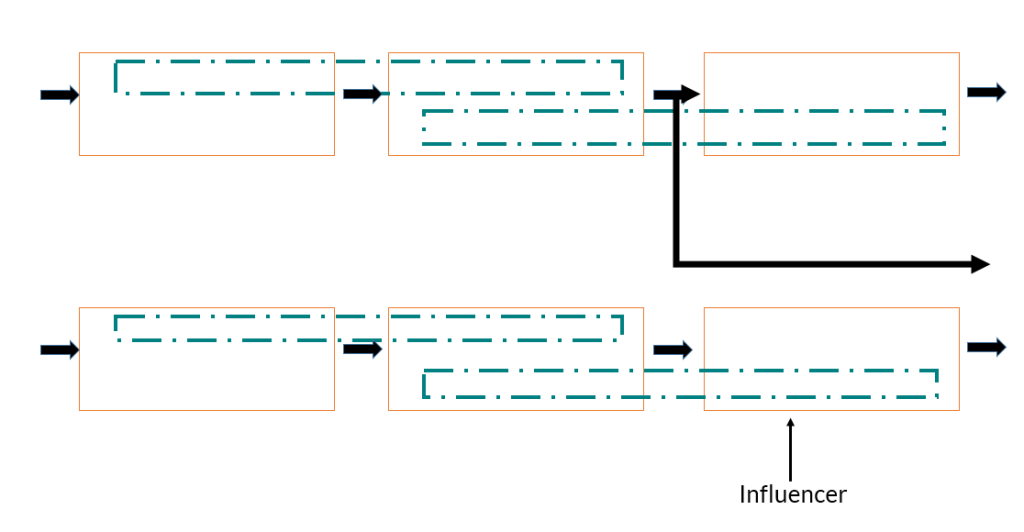As we discussed in a previous blog post, the value-adding chain is the ecosystem in which your target market segment resides. It describes the relationship between suppliers and customers all the way to the end user. It also documents the critical success factors at every level of the chain.
Building the Value-Adding Chain Map
Let’s look at how to build a value-adding chain map. The first thing you need to do is build a high level map.
Document the Boundaries
- Name the value chain
- Identify the outputs or products
- Identify suppliers, inputs, and your requirements for these inputs
- Identify end users and requirements

The process is the main part of the value chain—the hands through which the product or service passes on the way to the end user. You need to be clear on who all these stakeholders are and how they add value.
Document the outputs, customers, and customer requirements. You need to conduct qualitative and quantitative analysis to determine the benefits these customers truly value. Note who your suppliers are, the inputs they provide, and your requirements for those inputs. These requirements should be measurable.
Document the Flow of Value
- Identify your direct customer
- Identify customers between your direct customer and the end user
- Identify other suppliers to your direct customer (relevant to the offering being studied)
- Map key financial measures for customers and suppliers
Document Activities and Benefits
- Identify others who can influence purchasing decisions
- List key activities for each stakeholder
- List high priority benefits that drive purchasing behavior

Draw Relationships
Always start with the consumer and work backwards to raw materials. In the graphic below, the levels in the value-adding chain are depicted with solid line boxes. The vertical integrations are depicted with dotted line boxes. The bold arrows indicate the flow of goods and services. Where the chain branches, show how much goes down each branch. Show where influencers impact decisions.
Analyze the Value-Adding Chain
- What level in the value-adding chain drives the value and why?
- What level in the value-adding chain currently has the power and why?
- How do I anticipate that the distribution of power might change in the future, and what might cause it to change?
- Are there any anticipated structural changes or shifts in power due to the following factors?
- Acquisitions/divestitures
- Backward/forward integration
- Alliances
- Technology shifts
- Failures/new entrants
- Consolidation
- How might I gain power and influence along the chain to create and extract greater value?
- If my business is already in this market…
- Where along the chain is my business focused?
- Where should it be focused in the future?
- What do I need to know more about to effectively redefine my position?
- How do I go about deciding and directing organizational and operational change?
Start Building Your Value-Adding Chain
Most major industry value chains have been mapped at some level. Start with what you can find, then upgrade and validate. Develop the chain from scratch as a last resort. Different industries and products result in different value chains—the shape of the chain, the structure of the chain, and the key players in the chain.
Quantify both value chain drivers and user market dynamics utilizing analytics such as the Breakthrough Innovation Hub™.






